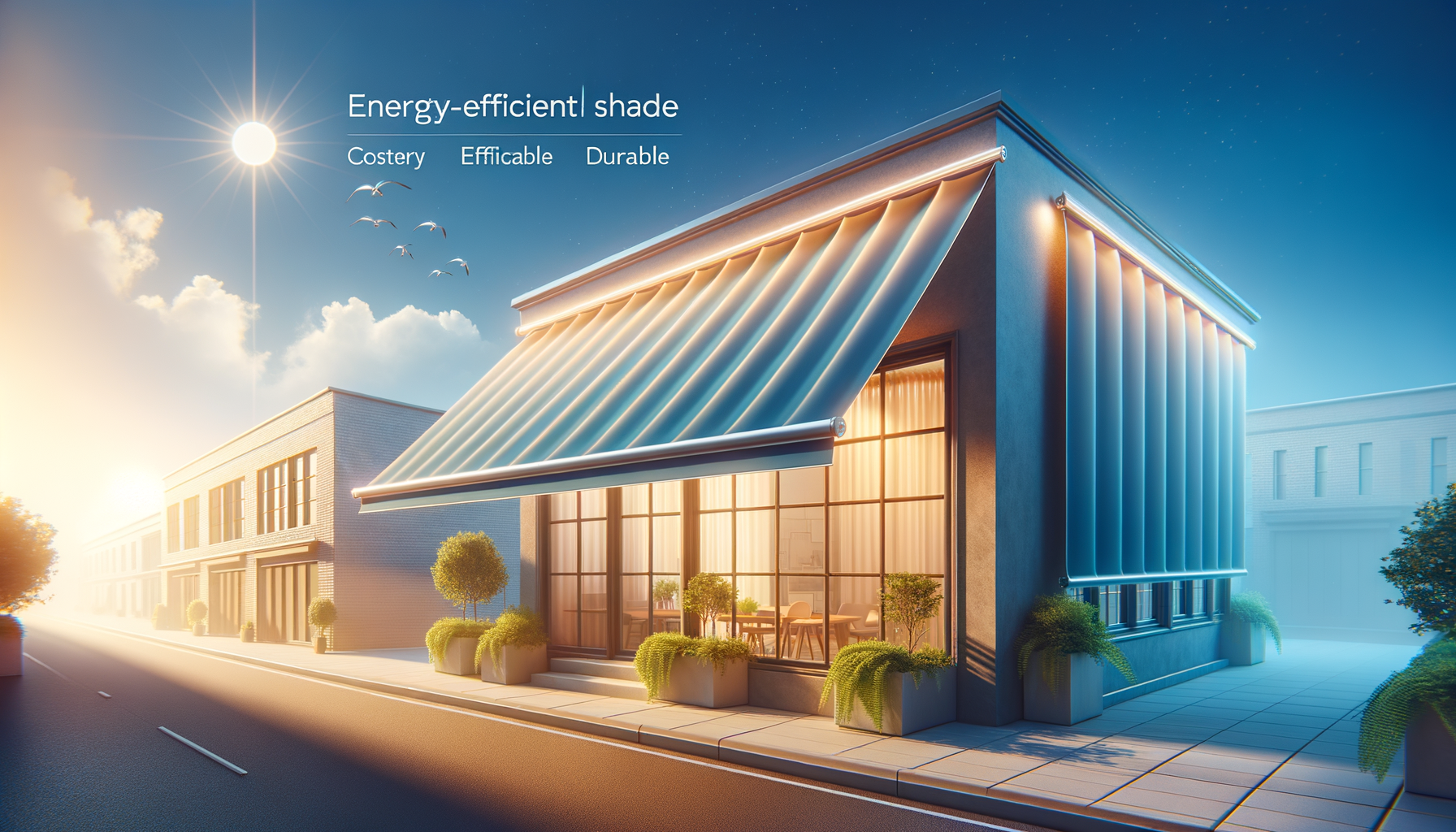
Discover the Efficiency of Awnings: Cost-Effective and Long-Lasting Shade Solutions
Understanding the Benefits of Awnings
Awnings are often overlooked as a simple yet effective solution for enhancing the energy efficiency of homes and businesses. By providing shade, awnings help to reduce heat gain inside buildings, which can lead to significant energy savings. According to the U.S. Department of Energy, awnings can reduce solar heat gain by up to 65% on south-facing windows and 77% on west-facing windows. This reduction in heat gain means that air conditioning systems do not have to work as hard, potentially lowering energy bills.
In addition to energy savings, awnings offer several other benefits. They protect furniture, flooring, and artwork from sun damage, thereby extending their lifespan. Awnings also enhance the aesthetic appeal of a building, adding a touch of elegance and style. With a range of materials and designs available, awnings can be customized to fit any architectural style.
Furthermore, awnings provide outdoor living spaces with much-needed shade, making patios and decks more comfortable during hot summer months. This can increase the usability of outdoor spaces, encouraging more time spent outside, which can be beneficial for mental health and well-being.
Types of Awnings: Finding the Right Fit
When it comes to selecting awnings, there are several types to consider, each with its own set of advantages. The most common types include retractable, stationary, and portable awnings. Retractable awnings are popular due to their flexibility; they can be extended or retracted depending on weather conditions. This type of awning is ideal for those who want control over the amount of sunlight entering their space.
Stationary awnings, on the other hand, are fixed structures that provide continuous shade and protection. They are typically more durable and can withstand various weather conditions. These are suitable for areas that require permanent shade, such as patios or outdoor seating areas.
Portable awnings offer versatility and ease of installation. They can be moved as needed and are perfect for temporary shading solutions. These are often used for events or in areas where permanent structures are not feasible.
When choosing an awning, consider factors such as the location, climate, and personal preferences. The material of the awning is also important; options include fabric, aluminum, and polycarbonate, each offering different levels of durability and maintenance requirements.
Cost Considerations and Long-Term Savings
Investing in awnings can be cost-effective in the long run, despite the initial expenditure. The price of awnings varies based on size, material, and type. Fabric awnings tend to be more affordable, while aluminum and polycarbonate options might cost more due to their durability and low maintenance needs.
However, the energy savings achieved through reduced air conditioning usage can offset the initial costs over time. According to the Professional Awning Manufacturers Association (PAMA), homeowners can save up to 25% on cooling energy by using awnings. This means that the investment in awnings can pay for itself in a few years.
Moreover, awnings can increase the resale value of a property by enhancing its curb appeal and energy efficiency. Potential buyers often appreciate homes that offer energy-saving features, making awnings a wise investment for those considering selling their property in the future.
Durability and Maintenance of Awnings
Durability is a key consideration when selecting an awning, as it affects both the lifespan and maintenance requirements. Fabric awnings, while attractive and versatile, may require more frequent cleaning and maintenance to prevent mold and mildew. Regular inspections are recommended to ensure that the fabric remains in good condition.
Aluminum and polycarbonate awnings are known for their durability and low maintenance. They are resistant to weather-related wear and tear, making them ideal for regions with harsh climates. These materials do not require regular cleaning and are less prone to damage from wind or rain.
Regardless of the material, proper installation is crucial to ensure the longevity of an awning. It is advisable to hire a professional installer to avoid common pitfalls such as improper angling or inadequate support, which can lead to premature wear or damage.
Environmental Impact and Sustainability
In addition to energy savings, awnings contribute to environmental sustainability. By reducing the need for air conditioning, they decrease energy consumption and the associated carbon footprint. This aligns with global efforts to reduce energy use and combat climate change.
Many awning manufacturers are now offering eco-friendly options, using sustainable materials and production processes. For example, some fabric awnings are made from recycled materials or are designed to be recyclable at the end of their life cycle. Choosing such options can further enhance the environmental benefits of installing awnings.
Moreover, awnings can support passive cooling strategies, which rely on natural methods to maintain comfortable indoor temperatures. By combining awnings with other passive cooling techniques, such as cross-ventilation and reflective roofing, homeowners can create a more sustainable and energy-efficient living environment.
Overall, awnings represent a practical and environmentally conscious choice for those looking to improve their home’s energy efficiency while contributing to broader sustainability goals.

